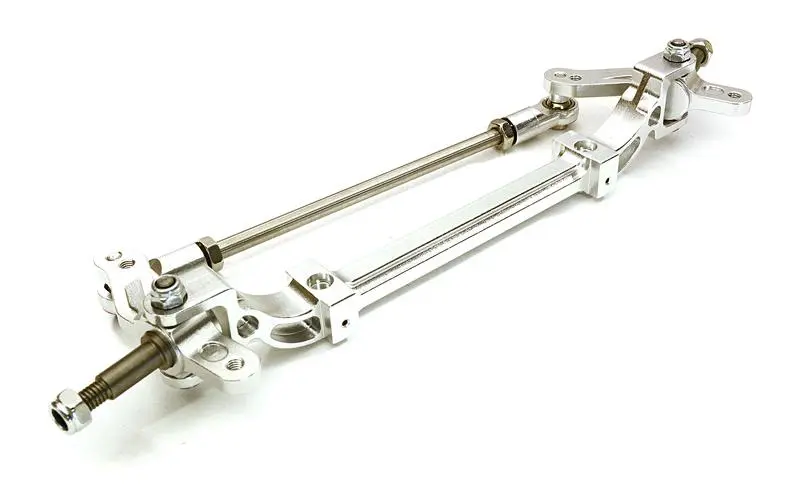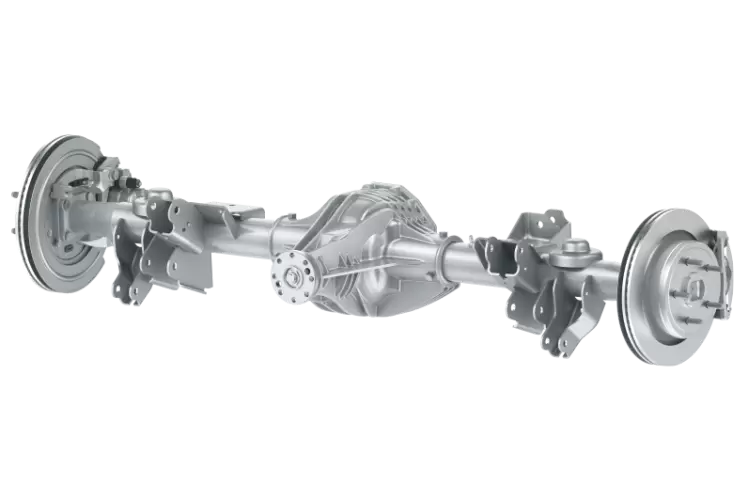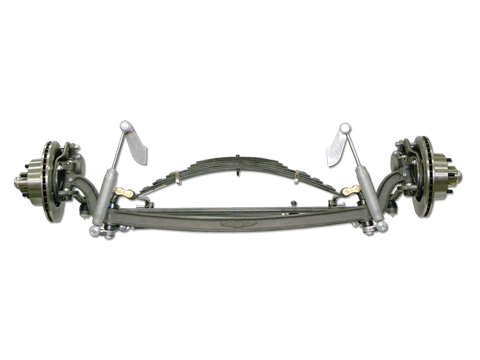
How does the weight distribution affect the performance of beam axles?
The weight distribution significantly impacts the performance of vehicles equipped with beam axles, and it plays a crucial role in determining their stability and handling characteristics. Here’s how weight distribution affects the performance of beam axles:
1. Balance and Stability:
The even distribution of weight among the vehicle’s axles is essential for maintaining balance and stability. When the weight is evenly distributed, the vehicle is less likely to experience weight shifts that can lead to instability or loss of control, especially during cornering and sudden maneuvers.
2. Oversteer and Understeer:
Weight distribution affects a vehicle’s tendency to oversteer or understeer. Oversteer occurs when the rear of the vehicle loses traction and swings outward during a turn, potentially leading to a loss of control. Understeer happens when the front tires lose traction, causing the vehicle to plow straight ahead rather than following the intended path. Proper weight distribution minimizes the risk of oversteer or understeer, contributing to predictable and safe handling.
3. Traction and Grip:
Weight distribution influences the amount of weight pressing down on each tire. Adequate weight on each tire enhances traction and grip, especially when driving on slippery or uneven surfaces. When too much weight is concentrated on a single axle, it can lead to wheel spin and reduced traction, affecting the vehicle’s performance off-road or in adverse weather conditions.
4. Load-Carrying Capacity:
For vehicles designed to carry heavy loads or passengers, proper weight distribution is critical to ensure that the suspension and beam axles can support the weight without strain. An imbalanced load can lead to premature wear and tear on suspension components, reducing the vehicle’s load-carrying capacity and potentially compromising safety.
5. Maneuverability:
Well-balanced weight distribution improves a vehicle’s maneuverability. It makes the vehicle more responsive to steering inputs, facilitating smoother and more controlled handling. This is particularly important for commercial and utility vehicles that need to navigate through tight spaces or make precise movements.
6. Tire Wear:
Uneven weight distribution can result in uneven tire wear. When one set of tires carries a significantly higher load than the others, those tires may wear out faster, leading to the need for premature replacement. Proper weight distribution helps ensure even tire wear and extends the lifespan of the tires.
Summary:
Weight distribution is a critical factor in optimizing the performance of vehicles equipped with beam axles. Properly balanced weight contributes to stability, predictable handling, enhanced traction, and increased load-carrying capacity. It ensures that the beam axles and suspension components operate efficiently, promoting the vehicle’s safety and overall performance.

How does a live axle differ from a dead axle in the context of beam axles?
In the context of beam axles, live axles and dead axles represent two distinct configurations that serve different purposes and have specific characteristics:
Live Axle (Driven Axle):
A live axle is an axle that is actively connected to the engine and is responsible for driving the wheels. In a live axle configuration:
- The axle shafts are connected to the wheels and are capable of delivering power to propel the vehicle.
- The wheels on a live axle are actively powered and provide propulsion, typically in rear-wheel-drive or four-wheel-drive (4WD) vehicles.
- Live axles are common in trucks, off-road vehicles, and 4×4 vehicles, where the ability to provide power to multiple wheels is crucial for traction in challenging terrain.
- Live axles are sometimes referred to as “driven axles” because they actively drive the vehicle.
Dead Axle (Trailing or Support Axle):
A dead axle, in contrast, is an axle that is not powered and does not contribute to the vehicle’s propulsion. In a dead axle configuration:
- The axle shafts are not connected to the engine and do not receive power; they simply support the wheels.
- Dead axles are often used in the front of front-wheel-drive vehicles, where the engine provides power to the front wheels, and the rear wheels are supported by dead axles.
- These axles are also used in trailers and semi-trailers, where they support the weight of the trailer but do not provide power to the wheels.
- Dead axles are sometimes referred to as “trailing axles” or “support axles” because they do not actively drive the vehicle.
Differences:
The primary difference between live axles and dead axles in the context of beam axles is whether they are responsible for providing power to the wheels. Live axles actively drive the vehicle, while dead axles are passive and serve a support or trailing role. The choice between these configurations depends on the specific vehicle design and its intended use, with live axles favored for off-road and high-traction applications and dead axles used for support and weight distribution.

How does a solid beam axle work in the suspension of a vehicle?
A solid beam axle, also known as a live axle, is a type of suspension system commonly used in various vehicles. It operates differently from independent suspension systems, and its function can vary depending on whether it’s used as a rear axle or front axle in a vehicle:
Rear Solid Beam Axle:
In vehicles with rear solid beam axles, the following key characteristics define how they work in the suspension:
- Single Solid Axle: A solid beam axle is a single, rigid axle that spans the width of the vehicle. It connects both rear wheels and is a single, solid unit.
- Equal Wheel Movement: When one wheel on the axle encounters a bump or road imperfection, the other wheel on the same axle is affected. Both wheels move up and down together, and this movement is linked by the axle.
- Simple and Robust: Solid beam axles are known for their simplicity and robustness. They can handle heavy loads and provide durability, making them suitable for applications like trucks, SUVs, and some off-road vehicles.
Front Solid Beam Axle:
Front solid beam axles are less common in modern vehicles but are used in some specific applications. Their operation is as follows:
- Single Solid Axle: Like the rear version, the front solid beam axle is a single, solid axle spanning the width of the vehicle.
- Equal Wheel Movement: The front solid beam axle connects both front wheels. When one wheel encounters an obstacle, both front wheels move up and down together, as they are linked by the axle.
- Off-Road Performance: Front solid beam axles are often used in off-road and 4×4 vehicles because they provide excellent articulation and durability, making them suitable for rugged terrain.
The key aspect of solid beam axles is that they do not allow independent movement of the wheels on the same axle. This means that when one wheel encounters an obstacle, the other wheel is affected as well. While this setup can provide robustness and load-carrying capacity, it may result in a less comfortable ride and reduced traction on uneven surfaces compared to vehicles with independent suspension.
It’s important to note that the choice between solid beam axles and independent suspension depends on the vehicle’s intended use, design goals, and the trade-off between load-carrying capacity and ride quality.


editor by CX 2024-04-02